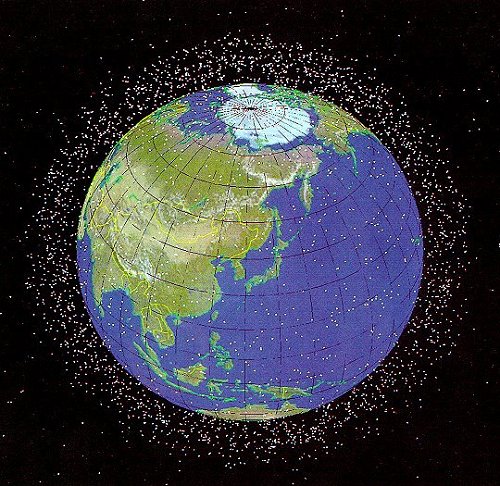"Infinite Reservoir" of Space
Today, let us fill infinity. The University of Houston's College of Engineering presents this series about the machines that make our civilization run, and the people whose ingenuity created them.
Thermodynamics students have to learn about an important thought model. It is the infinite thermal reservoir -- a region so large you can dump heat into it without increasing its temperature. Or you can cool it without reducing its temperature.
You may blink at the notion of cooling something without reducing its temperature, but that's just what makes the concept so interesting. Suppose I lower a sealed tin container of ice cubes into some tropical ocean. I come back an hour later and pull up a tin filled with tepid water. I've removed thousands of Btu's from the ocean without changing its temperature noticeably.
For a century, thermo teachers would suggest oceans, rivers, and the atmosphere as examples of thermal reservoirs. Not until well after WW-II did we realize that certain power plants, located along rivers, were rejecting enough low-temperature energy to warm the rivers and damage their biology.
It's been a hard lesson, but we've gradually caught on to the fact that the outdoors is not infinite. Now we're finding that's also true for what Captain Kirk called "space, the final frontier."
In a recent Science magazine article, space consultant Richard Crowther offers an alarming picture of what we've done to the region of space that reaches from just outside Earth's atmosphere to the level of geosynchronous orbit, just over twenty-two thousand miles up. Into that region, we have, by now, dumped over four million pounds of trash.
Close to ten thousand items have a dimension of over ten centimeters, and they've been catalogued. Those are the objects that could destroy a space vehicle. But hitting anything larger than even a centimeter (say a lens cap or a bolt) could have a lethal effect. Over a hundred thousand such items are now in orbit.
Over ninety-nine percent of the items are smaller than a centimeter, even though they're less than a thousandth of the total mass. We often hit those items, and some have done serious damage.
Trash tends to cluster in one of two shells. One is a thin shell at the geosynchronous orbit level. The other lies in the low orbit range used by space shuttles and space stations. It's around two hundred miles up. Within a decade or so, low-orbit junk is slowed by fringe molecules of the atmosphere. It eventually falls back to Earth. Junk in the outer shell can last indefinitely.
Already, we're designing space vehicles and flight patterns, not so as to eliminate impacts, but simply to reduce the amount of damage that's done. We keep track of those ten thousand large items -- part of a broken-up satellite, a dropped glove, a lost structural member, stuff that could destroy a vehicle. We track those pieces and dodge them.
But some thirty-five million tiny bits and pieces represent a danger that astronauts simply have to face. And they remind us of the mischief we've done by letting ourselves regard infinite reservoirs as anything more than a mathematical abstraction.
I'm John Lienhard, at the University of Houston, where we're interested in the way inventive minds work.
(Theme music)
Crowther, R., Space Junk -- Protecting Space for Future Generations. Science, Vol. 296, 17 May 2002, pp. 1241-1241.
For more on this matter see: The Problem of Space Debris

NASA image showing large low orbit junk as of 1998